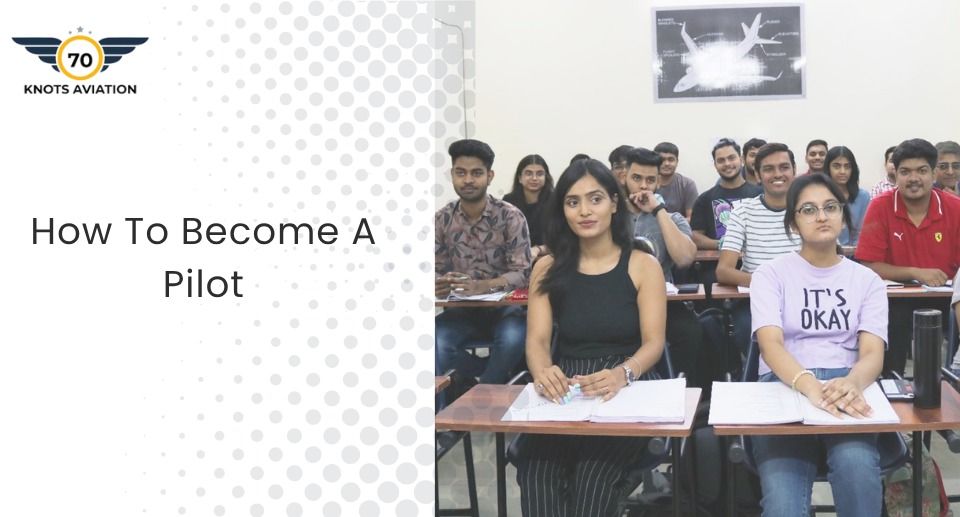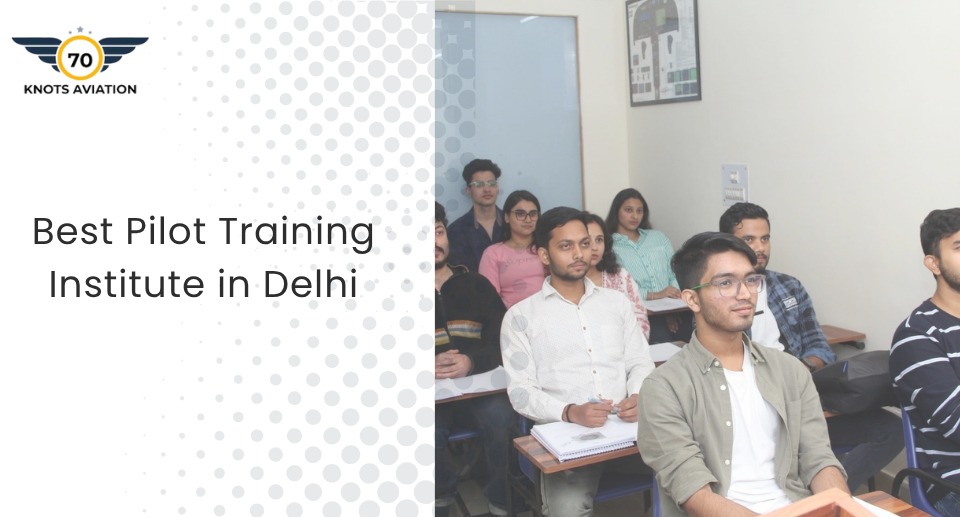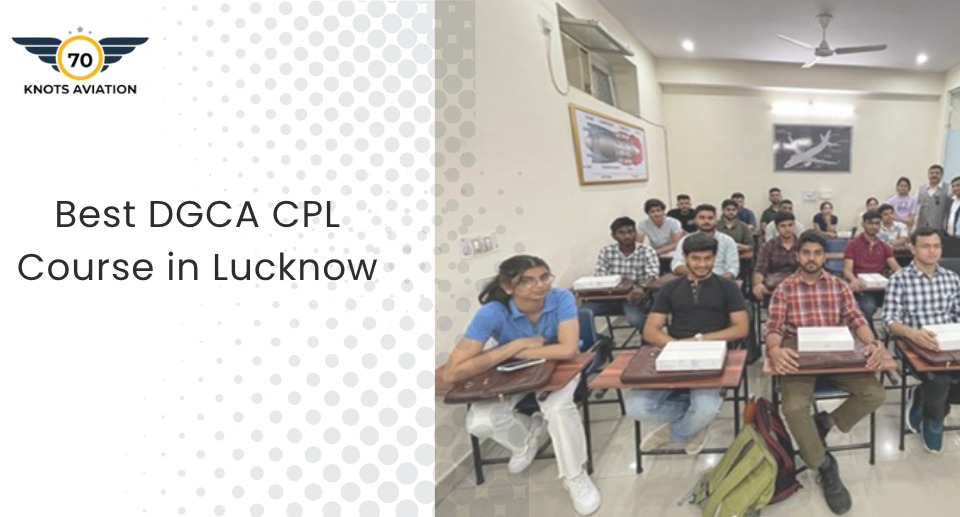How to Become a Pilot: The Ultimate Step-by-Step Guide to an Aviation Career

Being a pilot isn’t something that just falls in your lap. It’s a line‑up of steps that mix school, health checks, classroom learning, and a lot of actual flying. In India the rules are set by the DG‑CA. They say you need a Student Pilot Licence (SPL), then a Private Pilot Licence (PPL) and finally a Commercial Pilot Licence (CPL) before you can fly for money. The road map is clean, but the school you pick can make the trip feel a lot easier or a lot harder. This piece will walk through each stage, point out where the rules could be a bit tight, and argue why a well‑known academy—like 70 Knots Aviation—might be a smart shortcut.
Step 1 – Figuring Out the Path
A pilot’s life is made of many parts that have to fit together. First you have to meet the basic entry rules, then you sit in a ground‑school for subjects like weather, maps, rules, how the body works in the air, how the plane works and how to talk to control towers. While you study, you also start flying basic moves, solo flights, longer trips across the country, night runs and how to handle emergencies. When the programme ends you get the SPL, later the PPL and finally the CPL. After those, you keep adding flying hours, learning new airplane types and getting instrument ratings if you want airline jobs. The DG‑CA even says you have to keep training forever, so being a pilot is a life‑long thing.
Step 2 – The Minimum You Need
Three things are usually required.
- School – you need to finish 10+2 and you must have taken Physics and Math. Without those subjects the math for navigation may be too tough.
- Age – the SPL and PPL need you to be at least 17. For the CPL you must be 18 or older.
- Health – a DG‑CA Class 1 medical certificate is a must. It proves your eyes, heart and overall health are up to the job.
If any of these is missing you can’t even start the real training, which feels harsh for those who might be good pilots but didn’t have the right school subjects.
Step 3 – Picking the Right Flight School
The school you choose is more than a building with planes. A good academy will blend hands‑on flying with solid theory so you won’t forget what you learned. It also needs ties to airlines and a job‑placement office. Look for a place with a modern fleet, experienced teachers and a record of students passing exams. Some schools may promise everything but lack up‑to‑date aircraft; that can make learning harder later when you try to move to newer planes.
Step 4 – Getting Into a Training Programme
Training normally splits into Ground School and Flight Training.
- Ground School covers six core topics: Meteorology, Navigation, Regulations, Human performance, Aircraft systems and Radio telephony. Mastering these gives you the tools to read a weather map, plot a route, understand the law, know your limits, know how the plane works and speak clearly with ATC.
- Flight Training happens in light aircraft—usually a Cessna 152 or 172. You’ll learn basic stick‑and‑rudder moves, how to fly solo, how to travel from city to city, night flying and what to do if something goes wrong.
Doing both at the same time helps keep the knowledge fresh; you can try a maneuver, then study why the weather behaved a certain way, then fly again.
Step 5 – The Student Pilot Licence
The SPL is the first official paper that lets you fly solo. You get it after passing the medical and proving you meet the basic rules. It doesn’t let you carry passengers for payment, but it makes the solo hours you need for the next licence possible. Some people think it’s just a formality, but those solo flights are where confidence really starts to grow.
Step 6 – Passing the DG‑CA Theory Exams
After the SPL you must clear a set of theory tests: Air Regulations, Navigation, Meteorology, Aircraft Knowledge and Radio Telephony. Each test checks how well you understand a slice of flying life. For example, the Meteorology exam asks you to read synoptic charts and predict storms. A good study plan—class time, self‑review, practice tests—helps hit the passing marks those exams demand.
Step 7 – Getting the Private Pilot Licence
The PPL lets you fly a plane for fun, not for money. To earn it you usually need 40‑60 flight hours—some with an instructor, some solo—plus you must have finished all ground‑school subjects and passed a check‑ride that looks at your maneuvers, emergency handling and navigation. While you still can’t be paid to fly, the PPL proves you can safely command an aircraft.
Step 8 – The Commercial Pilot Licence
The CPL is the real ticket to a paying job. DG‑CA says you need at least 200 flight hours, which include solo, dual, cross‑country, night and instrument time, plus extra teaching for multi‑engine and instrument navigation. You also have to pass newer theory and practical exams that test you on harder stuff like complex flight plans and high‑stress scenarios. When you have the CPL you’re officially a commercial operator and airlines can hire you.
Step 9 – Building Real‑World Experience
Even with a CPL you need more hours to look good to airlines. Many pilots become flight instructors—teaching while adding hours. Others work charter, cargo or ferry flights, or even take part in aerial surveys. Flying different kinds of planes, in different conditions, builds the adaptability airlines love. If you can log significant time on multi‑engine or turboprop aircraft, the chance of getting an airline seat jumps up.
Step 10 – Type Ratings and Extra Certificates
To fly a big airliner you usually need a type rating for that specific model, like an Airbus A320 or Boeing 737. That means simulator work and a check on the systems, performance and procedures of that jet. Adding an instrument rating also helps because you can fly when weather blocks visual flight. Those extra papers give you more options and often higher pay.
Step 11 – Applying for an Airline and Moving Up
Most new pilots start as a First Officer (co‑pilot). You sit beside a senior Captain, learn the routes and airline routine, and slowly get more responsibility as you rack up hours and seniority. Promotions to Captain happen when you’ve logged enough time, show good performance and finish recurrent training like line checks and simulator refreshers. Keeping up with safety seminars and new tech keeps you eligible as rules change.
Why 70 Knots Aviation Might Be a Good Pick
70 Knots Aviation claims to give you everything you need in one package. Their curriculum mixes DG‑CA‑approved theory with a lot of hands‑on flying. They say they have high pass rates, which suggests the teaching style works. Their fleet includes modern single‑engine trainers and also some multi‑engine aircraft, so you can get the required hours without looking for another school later. They also own simulators that copy the Airbus A320 and Boeing 737, letting you start type‑rating practice early. The instructors are experienced pilots who also act as career mentors, helping you with licences and connecting you to airlines. Finally, the school says it has a job‑placement team that works with carriers to move graduates straight into airline jobs.
Conclusion
Becoming a pilot is a step‑by‑step road that demands meeting strict school, health and flight hour rules, plus keeping up with new certifications. From the first SPL, through passing theory, getting a PPL, earning a CPL, building lots of flight time, and finally adding type ratings, each stage builds the competence that airlines look for. Choosing a reputable academy—like 70 Knots Aviation—could smooth out the bumps, give you better machines and more guidance, and maybe get you into the cockpit faster. So the sky isn’t just a far‑off dream. With the right plan and the right school, the clouds could be inside your reach sooner than you think.


